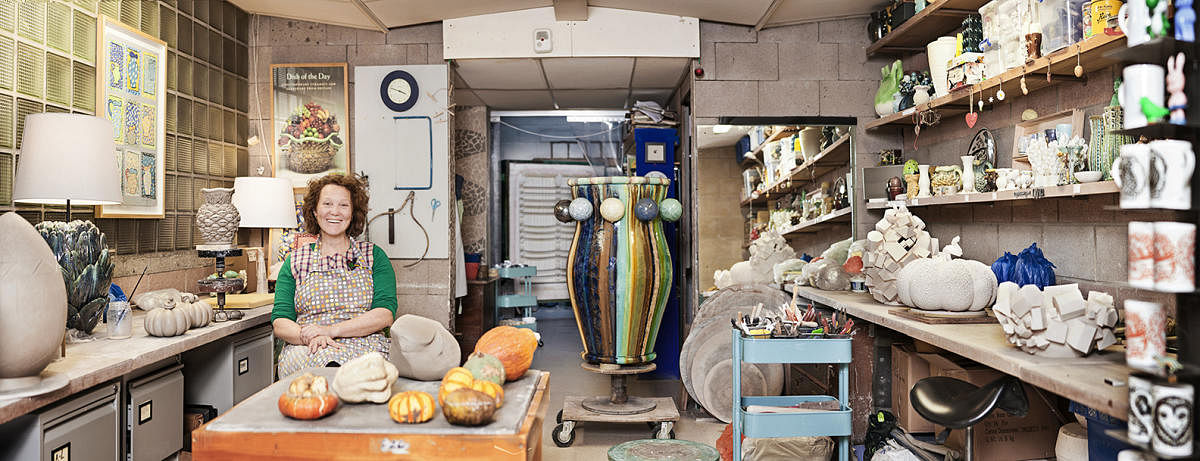
UK-based ceramic artist Kate Malone works in three areas of ceramics — public art, glaze research and the decorative arts. Kate says that she has been influenced by nature, history and travel, in particular the 30 trips she has taken to India with her husband Graham Inglefield since 1986.
The art, she says, has taught her the importance of detailing and focus. Calling her work “meditative”, Kate says that there’s so much left for her to explore in the world of ceramic art. She is currently in the city to deliver a talk on ‘Moving, Flowing, Running Ceramics, creativity and craftsmanship’ on February 21, at 6 pm, at the Bangalore International Centre.
Kate takes time off to chat with Metrolife about what got her interested in pottery, the challenges involved in the craft and more.
What got you interested in pottery?
I was first introduced to the art department when I was 12 years old. I had a great teacher who inspired me to learn. The softness of clay and the ability of the material to transform into hard ceramic left me curious.
Ceramics is the longest-lasting known processed material that man has created. It dates back to some 50,000 years. It was also this sense of permanence that drew me to the subject.
Is it a therapeutic process?
The process is mesmerising. After 50 years of making it, I am still intensely hooked. It is being called the new yoga, actually. Ceramic classes are full with new private centres opening all over the UK. I feel very lucky that my work is almost always meditative.
Of course, there are many parts of the process that are not relaxing. The hard work of running a business with three studios in two countries and 12 assistants keeps me very busy.
But it is the pleasure of making artefacts that enables me to work with such intensity.
What are the challenges involved in the same?
Ceramic art presents many challenges because it is a long process, and many things can go wrong. The trick is to recognise when things don’t go as planned. But, we still end up creating interesting pieces. In my profession, we call that “happy accidents”. My philosophy is to stay open to evolution through the process of making. The pieces that I make are very large and sometimes take hundreds of hours.
Moving the pieces when they are very delicate, the risk during firing; every step of the process is challenging. But then you learn from your mistakes. I still make them, and press forward wanting to learn through the work till the day I die.
Is the market for ceramic art growing?
As an artist there is always the challenge of selling something. It is normally much more difficult than making it. Luckily, I have the most wonderful art dealer named Adrian Sassoon, and he has world exclusivity for all of my work. He exhibits my work all over the world and has placed pieces in some 40 international museums. I feel very lucky to have such trustworthy agent and partner.
How do you achieve intricacy in work?
I have been doing this for over five decades, over the course of which I have learnt so much.
I draw great joy in repetition. I love sewing, I love the rhythm and music, I enjoy finding precision and detail. It is not mindless but a focused form of art. I sometimes work with layers and layers of detailing. Knowledge and application is an evolution of learning.
What will you be speaking about at Bangalore International Centre?
I will talk about my philosophy and the joy of being engaged with different communities. I will also talk about how my many visits to India have influenced my creative process, and give examples. I will take the audience through some of my important projects.